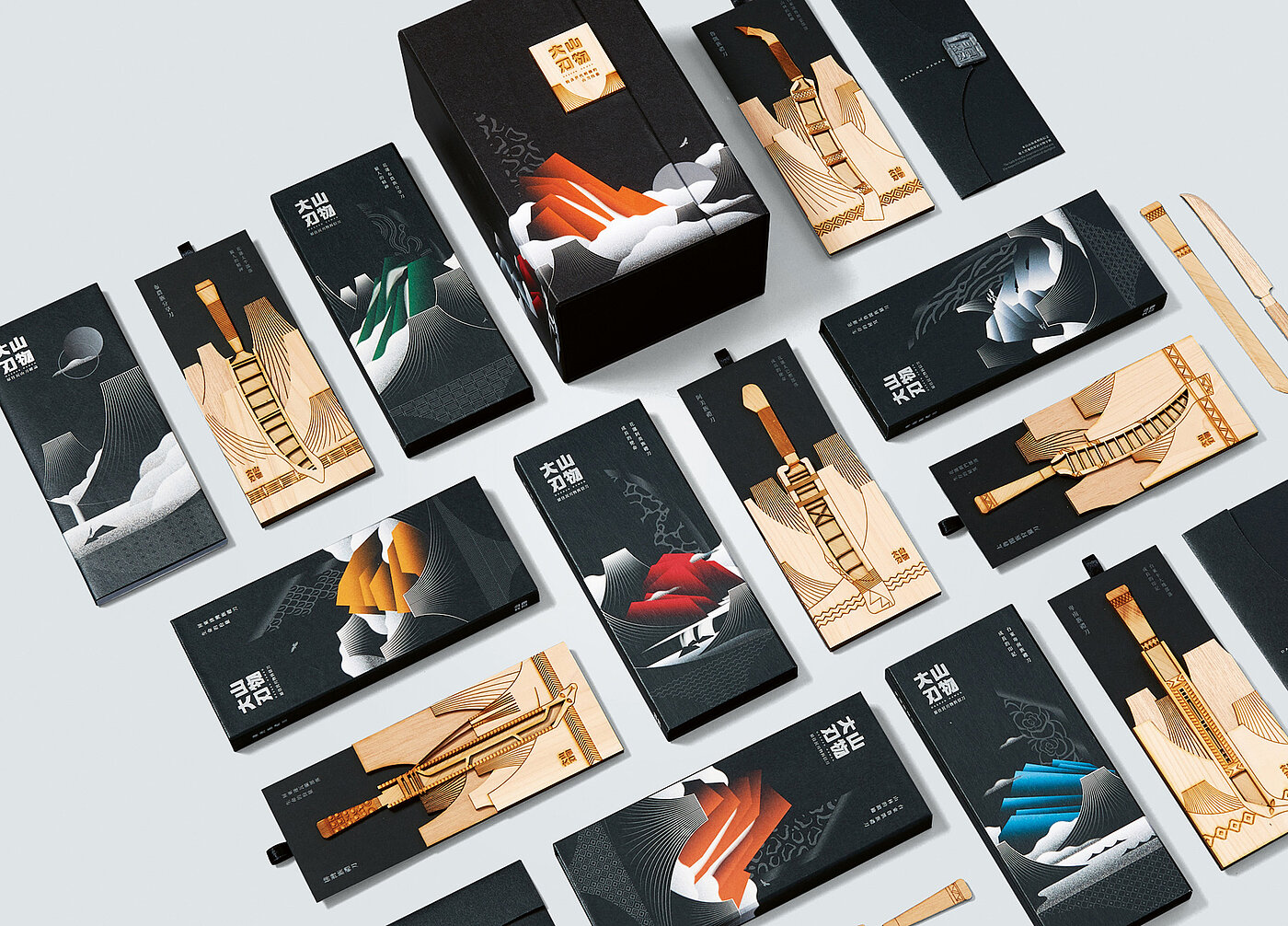![[Translate to English:] [Translate to English:]](/fileadmin/_processed_/e/f/csm_05-DP01159-2023BC_China_University_of_Technology_284862c180.jpg)
Tz-Chi Mao, Tzu-Ling Kuo, Yi-Xuan Xie and Yu-Ru Hsu are studying at the China University of Technology. Together, they devoted themselves to a special topic: the Shandao are mountain knives and, at the same time, a unique cultural asset shaped over centuries by the Indigenous ethnic groups of Taiwan. Their importance is underlined by a Taiwanese proverb: “With only a packet of salt and a knife, one can live in the mountains.” With great respect for this tradition, the students succeeded in creating a remarkable tactile and illustrative tribute.
Interview with China University of Technology
Red Dot: You have dedicated your work to a Taiwanese tradition. How did this choice of theme come about?
The culture of mountain knives is not only a local tradition of people born and raised in Taiwan. The Shandao is also one of the most important tools of the Indigenous people in this country. They continuously pass on the technical and artisan knowledge of their ancestors to the next generation – a cultural memory that we find highly fascinating.
What do you find so remarkable about the aesthetics of the Shandao?
Thanks to the stories of the tribal elders, we have been able to understand the beauty of this material cultural heritage. These knives are practical and at the same time have a unique meaning for the way of life of the different groups. The various patterns and carvings on the knives and the art of modelling are shaped by the respective cultural beliefs of the Indigenous groups.
You present the different knife shapes in the form of wooden letter openers in elaborate drawers. How did you decide on this realisation?
Our thought was that by transforming the knives into letter openers, we could create artistic collectible cultural products. With the choice of material, we have established a connection to the mountains and thus to the origin of the knives – hereby paying tribute to their origin.
In doing so, you combine tradition and modern design in your work. In your eyes, is it important to preserve cultural treasures and, for you as designers, to make them accessible?
In our eyes, it is indeed very important. As designers, we should not only keep up with the current generation, but also use our design expertise to ensure that the past and the future are valued by the public equally.
The implementation is very elaborate. How long did you work on this project?
It took about 15 months from conception of the project to its completion.

